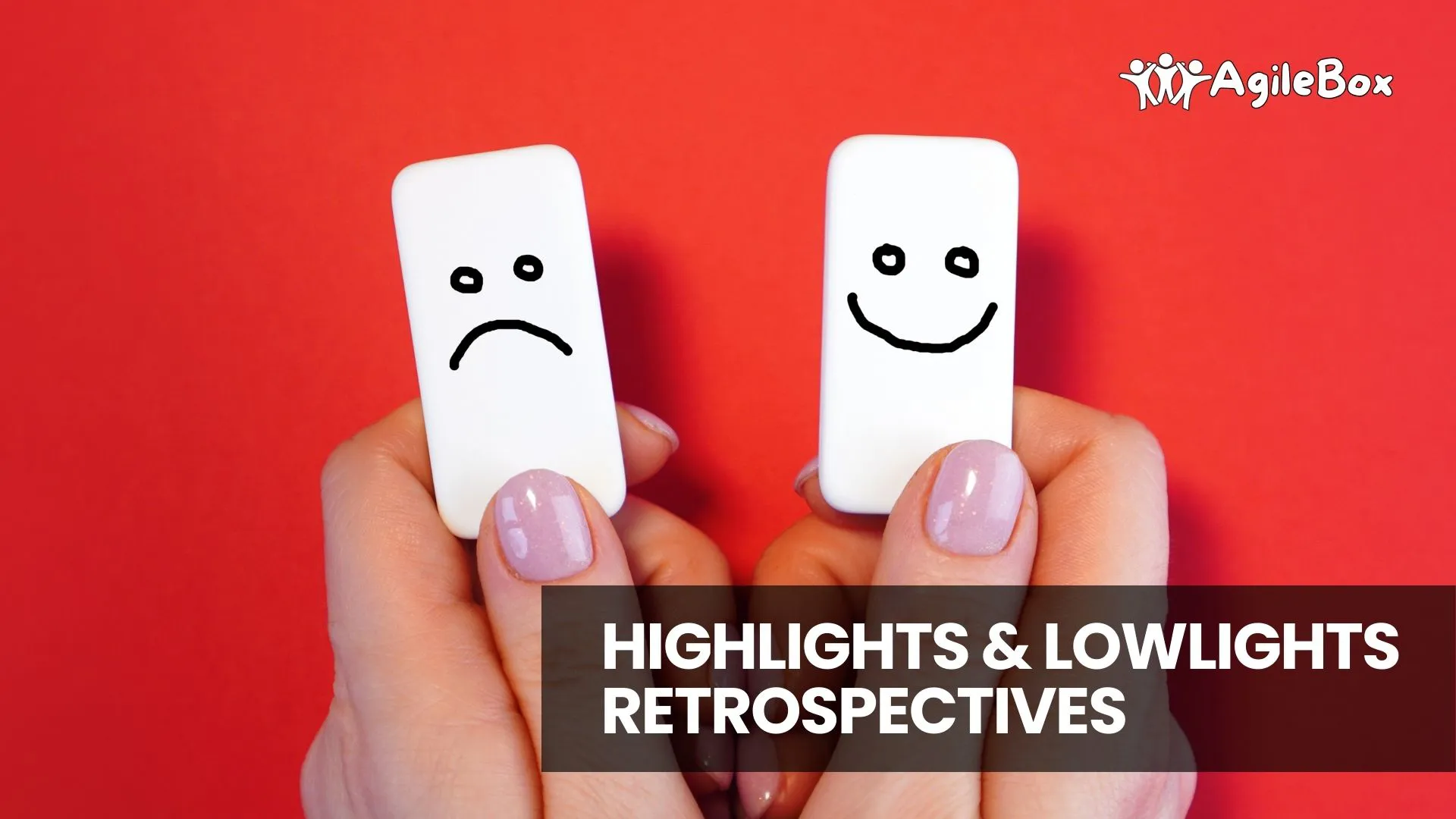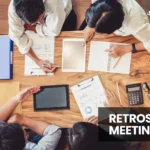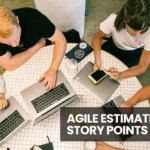In the realm of project management, continuous improvement is not just a goal but a necessity for success. One of the most effective tools for fostering improvement within teams is the retrospective. Retrospectives provide an opportunity for teams to reflect on their past performance, identify areas for improvement, and implement changes to enhance future outcomes.
However, within the diverse landscape of retrospectives lies a particular format that delves deeper into team dynamics and individual experiences – the Highlights & Lowlights Retrospective. In this blog, we will explore this unique approach to retrospectives, uncovering its essence, exploring its benefits, and offering guidance on how to conduct one effectively.
Contents
What are Highlights & Lowlights Retrospectives?
Definition of Highlights & Lowlights Retrospective
Highlights & Lowlights Retrospectives, as the name suggests, focus on both the highs and lows experienced by the team during a specific period, project, or iteration. Unlike traditional retrospectives that primarily concentrate on identifying areas for improvement, highlights & lowlights retrospectives aim to celebrate successes, acknowledge challenges, and foster a deeper understanding of team dynamics.

Key Characteristics of Highlights & Lowlights Retrospectives
At the core of highlights & lowlights retrospectives lie several key characteristics that distinguish them from other retrospective formats. These include:
- Balanced Focus: Highlights & lowlights retrospectives strike a balance between acknowledging achievements (highlights) and addressing setbacks (lowlights).
- Emotional Engagement: By encouraging team members to reflect on both positive and negative experiences, highlights & lowlights retrospectives foster emotional engagement and empathy within the team.
- Holistic Perspective: This retrospective format offers a holistic perspective on team performance by exploring both individual contributions and collective achievements.
→ Related article: Highlights & Lowlights Retrospective
When to Conduct a Highlights and Lowlights Retrospective Meeting?
Timing plays a crucial role in the effectiveness of retrospectives, including highlights & lowlights retrospectives. While there is no one-size-fits-all answer to the question of when to conduct such a meeting, there are several key factors to consider:
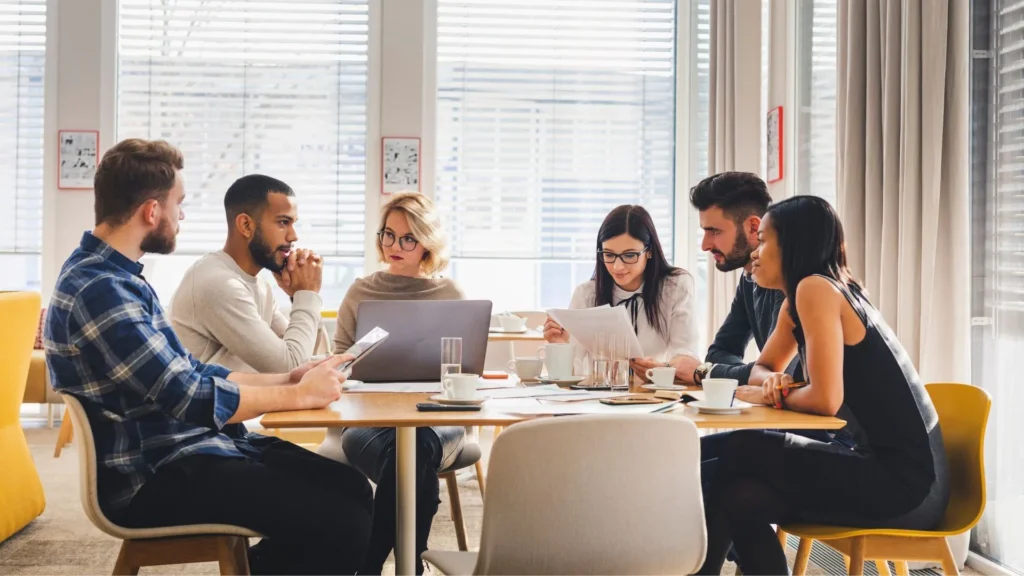
- End of a Project Phase: Highlights & lowlights retrospectives are often conducted at the end of a project phase, sprint, or iteration. This allows teams to reflect on their performance over a defined period and gather insights that can inform future actions.
- Milestone Achievements: Another opportune time to conduct a highlights & lowlights retrospective is following the achievement of significant milestones or goals. Celebrating successes and addressing challenges at these junctures can boost team morale and reinforce a sense of accomplishment.
- Regular Intervals: Some teams opt to conduct this template at regular intervals, such as weekly, bi-weekly, or monthly. This approach promotes continuous improvement and ensures that feedback is collected and acted upon in a timely manner.
- Critical Incidents: In certain cases, teams may choose to conduct a highlights & lowlights retrospective in response to specific critical incidents or events, such as project setbacks, unexpected successes, or changes in team composition.
Ultimately, the decision of when to conduct a highlights & lowlights retrospective should align with the team’s goals, project timeline, and organizational culture. By strategically choosing the timing of these meetings, teams can maximize their effectiveness and drive positive outcomes.
→ Related article: 8 Great Retrospective Meeting Templates In Jira
How to Conduct a Highlights & Lowlights Retrospective
Conducting a successful highlights & lowlights retrospective involves careful planning, effective facilitation, and a commitment to fostering open communication within the team. Here’s a step-by-step guide to conducting a highlights & lowlights retrospective:
Preparation Phase
1. Setting the Stage
Before the retrospective meeting, it’s essential to set the stage by communicating the purpose and expectations to the team. Clearly outline the objectives of the retrospective, emphasizing the importance of both celebrating successes and addressing challenges.

2. Gathering Participants
Ensure that all relevant team members are invited to participate in the retrospective. This includes not only core team members but also stakeholders or individuals whose contributions may have impacted the project’s outcomes.
Facilitation Phase
1. Identifying Highlights
Begin the retrospective by inviting team members to share their highlights from the project phase or iteration. Encourage participants to reflect on moments of success, achievements, milestones reached, or positive contributions made by team members.
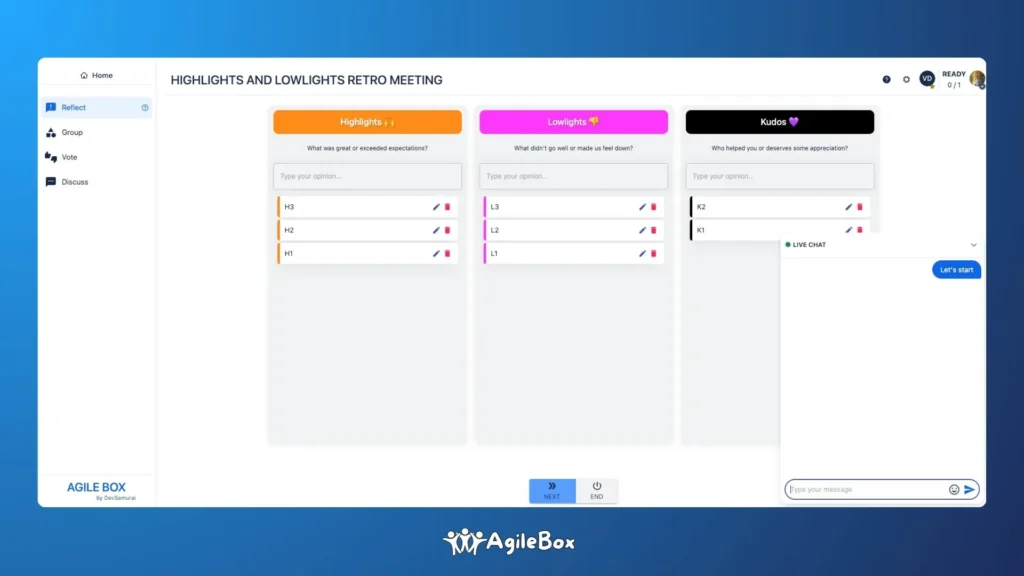
2. Identifying Lowlights
After discussing highlights, shift the focus to lowlights by inviting team members to share challenges, setbacks, or areas for improvement. Create a safe and non-judgmental environment where team members feel comfortable expressing their concerns or frustrations.
3. Discussion and Reflection
Facilitate a discussion around the highlights and lowlights identified by the team. Encourage open dialogue, active listening, and constructive feedback. Explore the root causes of both successes and challenges, seeking to understand the underlying factors that contributed to each.
Benefits of Highlights & Lowlights Retrospectives
Highlights & lowlights retrospectives offer numerous benefits to teams and projects, contributing to improved communication, enhanced morale, and continuous learning. Here are some key advantages of incorporating highlights & lowlights retrospectives into your project management practices:

Improved Team Communication
By providing a structured forum for reflection and discussion, this retrospective template facilitate open communication within the team. Team members are encouraged to share their experiences, insights, and concerns, fostering a culture of transparency and collaboration.
Increased Team Morale and Motivation
Celebrating successes and acknowledging challenges during highlights & lowlights retrospectives can boost team morale and motivation. Recognizing individual and collective achievements reinforces a sense of accomplishment and encourages team members to continue striving for excellence.
Enhanced Learning and Continuous Improvement
Highlights & lowlights retrospectives promote a culture of learning and continuous improvement within the team. By reflecting on past experiences, identifying lessons learned, and implementing actionable insights, teams can adapt and evolve in response to changing circumstances, ultimately enhancing their performance and productivity.
Transparency and Accountability
Through candid discussions about both successes and challenges, highlights & lowlights retrospectives promote transparency and accountability within the team. Team members take ownership of their contributions and commitments, fostering a sense of responsibility and accountability for the project’s outcomes.
By leveraging the benefits of highlights & lowlights retrospectives, teams can strengthen their cohesion, resilience, and effectiveness, ultimately driving positive outcomes and success in their projects.
Conclusion
Highlights & lowlights retrospectives, it’s essential to emphasize in project management. This retrospective template meeting empowers teams to learn from their experiences, adapt to changing circumstances, and achieve greater levels of performance and productivity.
If you like this template, you can try it on AgileBox – Planning Poker, Agile Retrospectives & Daily Standup for Jira. Not just Highlight and Lowlights templates, you can also discover other templates or customs templates for your team.
→ Try out AgileBox – Planning Poker, Agile Retrospectives, Daily Standup for Jira

